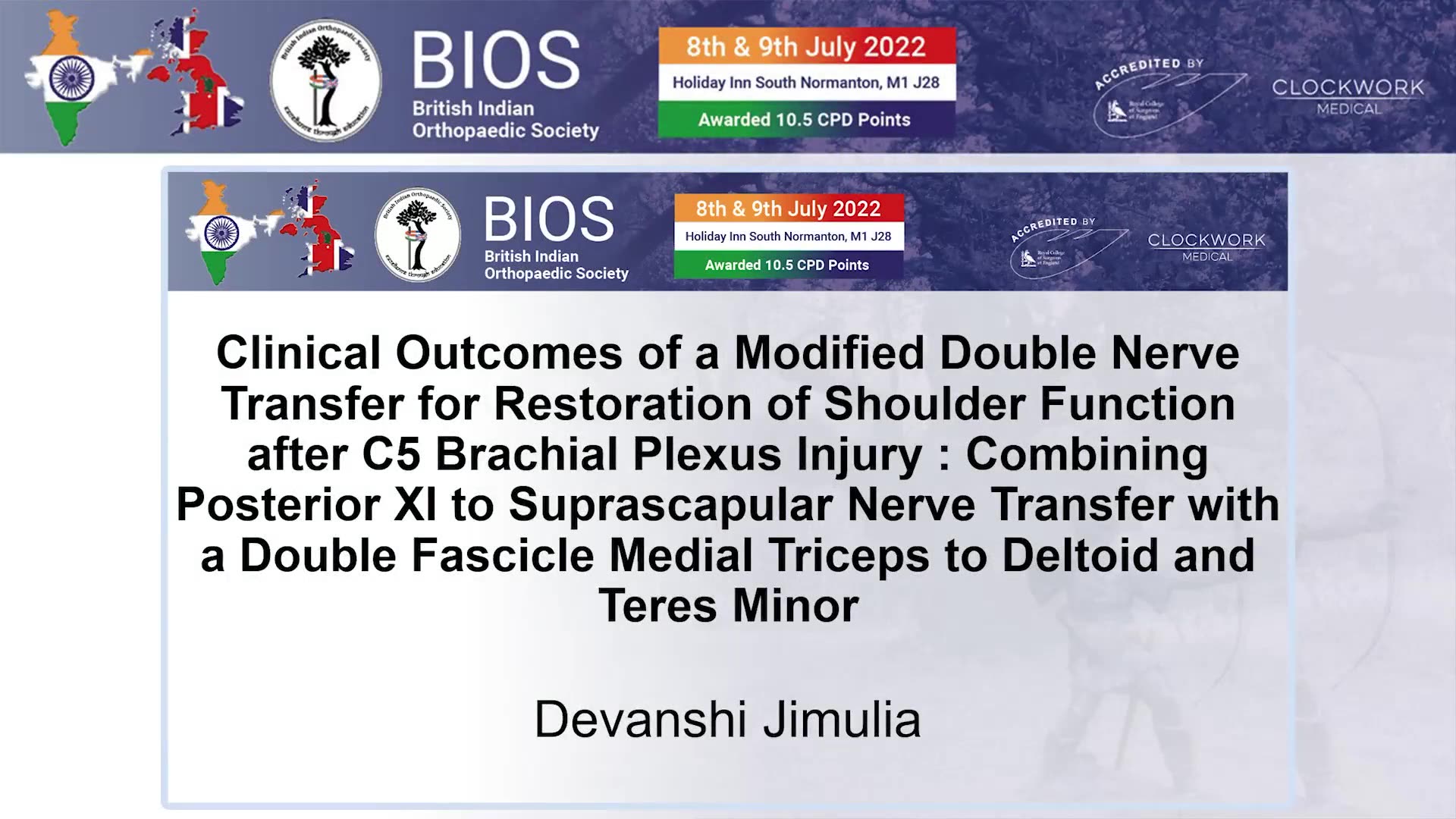Please login to view this media

- Talk
- 08/07/2022
- UK
Clinical Outcomes of a Modified Double Nerve Transfer for Restoration of Shoulder Function after C5 Brachial Plexus Injury : Combining Posterior XI to Suprascapular Nerve Transfer with a Double Fascicle Medial Triceps to Deltoid and Teres Minor
Description
In this presentation, Devanshi Jimulia introduces the Birmingham protocol for managing peripheral nerve injuries in the shoulder, specifically focusing on C5, C6 brachial plexus injuries. The protocol, developed during her BSc project in collaboration with the HaPPeN Research Group, emphasizes a modified nerve transfer technique to restore shoulder function. Traditionally, the long head of the triceps nerve is used for transfer to the axillary nerve, but the Birmingham method employs the medial head's nerve, preserving the function of the long head and facilitating better reinnervation by shortening the distance to the muscle. The approach aims to enhance deltoid and teres minor innervation, improving shoulder abduction and external rotation.
Devanshi details the anatomy involved, including the spinal accessory nerve's branches and suprascapular nerve pathway, highlighting potential tether points in high-energy trauma cases. The posterior approach is favored over the traditional anterior one for its ability to reveal underlying pathologies, offering a clear advantage in surgical outcomes. The presentation also outlines a study on 22 patients who underwent this modified nerve transfer, with a focus on their recovery metrics, such as abduction and external rotation power, pooled from collected data showing significant improvement among patients. In conclusion, the Birmingham protocol, with its dual nerve transfer strategy, aims to optimize shoulder function recovery, showcasing promising results and advocating for future applications in clinical practice.